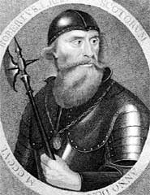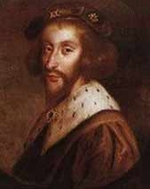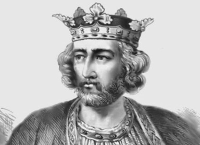Robert the Bruce: Hero of Scotland
Part 1: The Scene in Scotland Robert the Bruce is remembered as helping bring independence to Scotland. His 14th-Century story is more complicated than that. 
Bruce was born on July 11, 1274 at Turnberry Castle, in Ayrshire. His father was also named Robert Bruce, and he was the 6th Lord of Annandale; his mother was Marjory Countess of Carrick. One story of how they met is that Bruce was the one who delivered to Marjorie the news that her first husband, Adam of Kilconquhar, had died while on the Eighth Crusade. Marjorie, in turn, held Robert captive until he agreed to marry her. They did marry, in 1271. Young Robert grew up in a well-to-do family and likely spoke multiple languages. He studied law and religion and took a particular interest in history, philosophy, and literature. 
Young Robert was just 12 when King Alexander III died without an heir. Alexander had ruled for nearly 40 years, becoming the first Scottish monarch to bring the Western Isles into the fold and enjoying a good relationship with England, something many of his predecessors could not say. He had become the father of two sons while king. Both of those boys (and their mother) had died before Alexander had, and his new wife had yet to give birth to a child. Alexander died suddenly, leaving behind only the slimmest of possibilities of an heir–his granddaughter, who was 4. The Scottish Parliament, meeting in April 1286, decided to accept this granddaughter, Margaret, known as the Maid of Norway, as heir to the throne and eventually sent for her. Parliament also appointed six Guardians of Scotland, to act in the new queen's interests, including in finding her a husband.  Also in the mix at this point was England's King Edward I, who was Alexander III's brother-in-law and wanted Margaret to marry his son, also named Edward. The Scottish Guardians decided that Margaret and Edward would make a good match and sent for the girl, in 1290. She died on the voyage, creating crisis anew. Into this power vacuum stepped no less than 13 men, with varying claims to the throne. The two most powerful were John Balliol and Robert Bruce, young Robert's grandfather. After an exhaustive and complicated process, Edward, who was head of a committee of 105, persuaded the rest of the committee to accept Balliol as king. Balliol proved ineffective as king and, after refusing to go to war against France in support of England, Edward invaded Scotland. Both Robert Bruces fought with Edward against Balliol, who abdicated and was later imprisoned. Instead of handing the crown to another Scotsman, Edward declared himself the rightful ruler of Scotland. He had the army enough to back up that claim for another decade. Next page > The Rise of the Bruce > Page 1 2 |
|
Social Studies for Kids
copyright 2002–2025
David White




